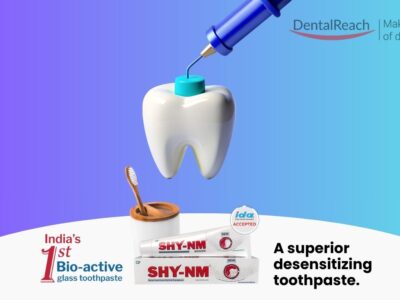Patient satisfaction is key for a successful dental practice. There are many varieties of treatments available in dentistry from preventive to restorative to replacement. For each of these treatments and conditions, patient expectations vary from person to person. While addressing patients, dentists needs to keep details of all the patient’s expectations. Some patients are highly demanding and some are happy with average treatment results.
Restoring single decayed tooth is different from doing the full mouth rehabilitation. In daily general dental practice the challenges are many and diverse; often the patient wants one thing corrected. They assume it is just a simple fix, “I just want all my teeth to have the same colour, and beautiful smile.”.
Depending upon the initial situation, the amount of dentistry work required to provide a healthy, beautiful and dazzling smile can vary enormously. Patient’s medical and dental conditions makes treatment plans complicated and may hamper the final outcome.
7 Essential steps while addressing patient treatment
Careful evaluation of patient’s dental and medical condition
This is the main step after understanding the patient’s chief complaint. Careful evaluation of dental and medical conditions helps to formulate and make decisions about available treatment options. Ask patients about any bleeding disorders, previous history of diseases and medications.
Understand patient’s requirements and expectations
This is the key to make the patient happy about the final treatment results. Some patients have a very clear and detailed outcome picture in their mind. Sometimes that may be realistic and sometimes they may be vague. The purpose of managing patient’s expectations in dental practice is to minimise the discrepancies between expectations and their actual experiences.
Whenever patient’s expectations are high, make him aware about his current situation and available treatment options and challenges while treating him. Unless and until dentists don’t do this, patients will continue to be highly demanding. For example, sometimes a case of generalised periodontitis comes to the clinic and demands teeth whitening treatment. Likewise, some patients demand implants but there is an occlusal discrepancy or no space in bite. Some complete denture patients harbour expectations to chew nuts with dentures. We need to educate and motivate them to consider the prior procedures and corrections which may be required to reach their goals. Sometimes this may be just too expensive, not only in terms of money but also in terms of time.
No one wants time consuming dentistry, everyone wants instant end results, and we as dentists are often under pressure to provide that quick, inexpensive service without the time to consider all options. By structuring proper protocols and time to consider available options, we can reduce errors and one can easily deliver the smile that fulfills the patient’s expectations.
Use proper diagnostic measures
Diagnostic measures may include IOPA, OPG, CBCT, lab tests, plaster study models, diagnostic wax ups, intra and extra oral photographs etc. This helps to educate the patient about his current situation as well as formulating a treatment plan. Digital smile designing is a recent concept that plays an important role in patient education and treatment formulation.
Educate patients about their treatment plan
Study models and diagnostic wax ups can be used for patient education; this helps patients imagine final outputs and the results of the treatment. Along with this, digital software which can simulate the final results on patients photographs can be really helpful.
This can give an idea to the patient about the final result in their own mouth. Digital photographs helps in diagnosis by placing lines and essential measurements that can be calibrated. Show patients previously treated cases; carefully teach them before and after treatment results. That gives patient a gross idea about the final outcomes. Patient can be assured about the treatment and the results.
Consent
Consent discussion is an important opportunity to detect unrealistic patient’s expectations. Information about the risks of treatment or complications which may occur should be told and explained to the patient. Ensure patient is actively authorising and not passively agreeing to the treatment plan.
Consent documentation and their storage should be done for medico legal issues. The patient who has accepted all the risks and problems for the treatment decision is less likely to blame us, when the outcome is less inferior to the actual expectations. Many a time patients are taken by surprise by results and hence clinical malpractice claims have arisen.
Treatment
After educating about the treatment plan, definitive treatment should be initiated. Whenever required, give temporary crowns and bridges instead of giving final crowns and bridges, that helps to understand errors and corrections can be done. A good dental lab is important while managing patient’s expectations.
Follow up and feedback
After delivering the wonderful smile, patients should be recalled time to time to monitor the prosthesis and any other dental problem. Don’t forget to take feedback from patients about the treatment experience and about their happiness. That is the only reward for any dentist and also helps to assure other patients by showing it.
Conclusion
Comprehensive treatment planning in dentistry including aesthetic dentistry, implant dentistry and full mouth rehabilitation can be complex. While treating such complex cases – aesthetics, biology and function all need to be considered.
Time spent in this preparation using digital technology and visual communication is a very important factor. Time should be spent for understanding the psychology of how patients will take decisions and how we should communicate with them to guide them in their decision making process and make sure they are fully informed.
How can we manage patient expectations and ensure optimum results? A thorough preparation, visual communication, patient motivation and education is always recommended.




















Comments